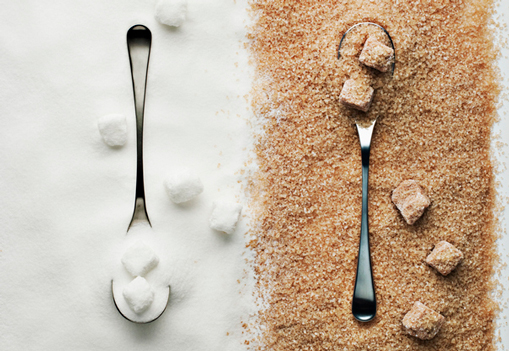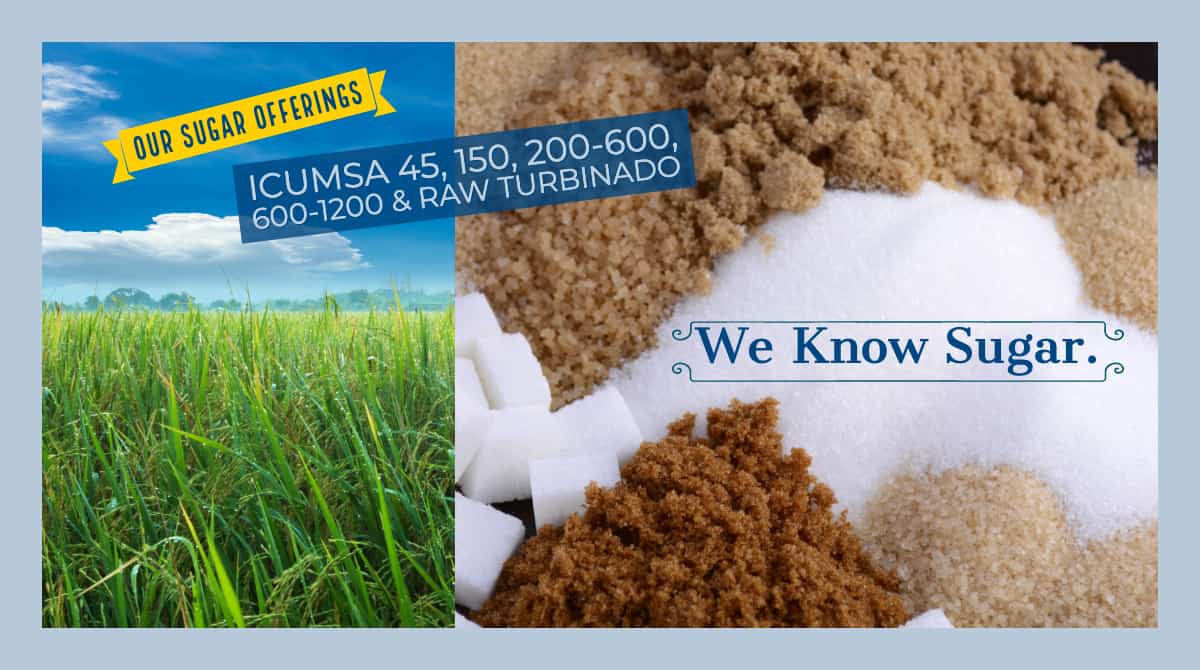The Comprehensive Trip of Sugar Cane: Understanding Materials and Production Methods
The trip of sugar walking stick is an intricate process that begins in tropical regions with perfect expanding conditions. Cultivation methods are designed to take full advantage of yield and sustainability. Collecting approaches range from traditional hand-operated strategies to contemporary mechanical approaches. After harvest, sugar walking stick goes through numerous handling phases to transform it into granulated sugar. This expedition discloses not only the intricacies of production however also the more comprehensive effects for worldwide markets and the setting. What lies yet first transformation?

The Background of Sugar Cane Growing
Sugar walking stick farming days back thousands of years, its beginnings can be traced to the exotic regions of Southeast Asia, where very early farmers initially identified the plant's wonderful sap. This exploration led to the growing of sugar walking stick as a staple plant, progressively infecting India and the Middle East. By the first millennium AD, sugar walking cane was being cultivated in these areas, where methods for drawing out and refining sugar were developed.The plant gained prestige in Europe throughout the Crusades, as returning soldiers brought expertise of sugar production back home. By the 15th century, the facility of sugar plantations began in the Caribbean, driven by the need for sugar in Europe. The transatlantic servant trade sustained this growth, as shackled labor was utilized to make the most of production. Over centuries, sugar walking stick farming evolved, influencing economic situations and cultures worldwide, making it a significant farming asset.
Growing Conditions and Agricultural Practices
The effective cultivation of sugar walking cane relies heavily on particular expanding conditions and agricultural methods. Perfect temperature levels vary in between 20 to 32 degrees Celsius, with well-distributed rainfall of 1,500 to 2,500 millimeters yearly. Soil quality is necessary; fertile or sandy dirts, rich in raw material, promote healthy growth.Farmers commonly use numerous agricultural practices to boost return. Plant rotation and intercropping are typical methods to preserve dirt fertility and control parasites. Routine watering may be needed in drier areas, ensuring that the plants obtain sufficient moisture. Fertilization, specifically with nitrogen and potassium, is essential for robust growth.Pest and weed administration approaches, including incorporated bug management (IPM), assistance to reduce losses. Sustainable practices, such as very little tillage and chemical-free farming, are gaining traction among producers to safeguard the setting. Jointly, these aspects add greatly to the effective production of sugar walking cane.
Gathering Techniques and Timing
In sugar walking stick production, the choice in between handbook and mechanical harvesting substantially impacts efficiency and return. Timing is additionally essential, as harvesting at the ideal moment assurances maximum sugar web content and lessens losses. Understanding these factors is crucial for effective sugar walking stick cultivation.
Handbook vs. Mechanical Harvesting
Collecting sugar cane includes 2 main methods: guidebook and mechanical, each with unique benefits and obstacles. Hand-operated harvesting, typically performed by workers using machetes, enables better accuracy in reducing and lowers damages to the plant. It is typically favored in areas with unequal surface or where the crop is intermixed with other plants, as employees can navigate these intricacies a lot more efficiently. Nevertheless, it is labor-intensive and lengthy. Conversely, mechanical harvesting utilizes specialized equipments to cut and accumulate the walking cane quickly, boosting efficiency and lowering labor costs. This technique is matched for massive operations however can cause greater crop damage and dirt compaction. Eventually, the selection in between guidebook and mechanical harvesting depends upon numerous aspects, consisting of financial factors to consider and ecological conditions.
Optimal Gathering Timing
Picking the ideal minute to gather sugar walking cane greatly affects both yield and top quality. Perfect harvesting usually takes place when the walking stick gets to complete maturity, normally in between 12 to 18 months after growing. At this stage, sucrose levels height, making sure the very best sugar extraction prices. Weather likewise play an essential function; gathering during completely dry periods can prevent damage to the cane and decrease soil compaction. In addition, monitoring the plant's color and fallen leave drop can show preparedness, as a yellowing of the fallen leaves suggests that the walking cane is ripe. Timely harvesting is important, as delays can lead to reduced sugar web content and increased sensitivity to parasites and diseases, inevitably impacting total production effectiveness.
Handling Techniques: From Cane to Sugar
The handling of sugar walking cane includes essential extraction strategies that divide the juice from the coarse plant material. Adhering to extraction, the refining process transforms the raw juice into crystallized sugar, guaranteeing pureness my sources and top quality. Understanding these methods is necessary for understanding the trip of sugar from cane to end product.
Extraction Strategies Summary
Extraction techniques play a significant role in changing sugar walking cane right into usable sugar. Initially, the walking cane is harvested and moved to refining facilities where it undergoes detailed washing to get rid of contaminations. The next step includes squashing the walking stick utilizing hefty rollers, which releases the juice containing sucrose. This juice is after that cleared up via the enhancement of lime and heat, allowing pollutants to settle out. After explanation, the juice is vaporized under regulated temperatures to focus the sugar material. Subsequently, crystallization takes place, where sugar crystals are developed as the concentrated juice cools. These techniques ensure the effective removal of sugar while preserving the quality required for further processing. Recognizing these methods is vital for understanding the overall production of sugar from sugar cane
Refining Process Explained
Refining sugar from the drawn out juice is a critical action that improves its pureness and quality. This procedure involves numerous stages, starting with explanation. The juice is heated up and treated with lime and other representatives to get rid of pollutants, causing a clearer fluid. Next, the made clear juice undergoes evaporation, where water is removed to concentrate the sugar material. The concentrated syrup is then taken shape by cooling down, allowing sugar crystals to create. These crystals are divided from the remaining syrup, called molasses, with centrifugation. Lastly, the raw sugar is further improved via washing, purification, and drying, which eliminates any kind of staying impurities. Completion product is the granulated sugar generally utilized in families and sectors worldwide, ensuring consistency and sweetness.
Sustainable Practices in Sugar Cane Production
Sugar walking stick production has typically counted on extensive farming techniques, there is an expanding focus on lasting practices that advertise environmental wellness and economic practicality. Farmers are increasingly embracing methods such as plant rotation, which enhances soil fertility and decreases parasite infestations. Integrated bug administration (IPM) is additionally gaining traction, enabling more info here all-natural killers to control pest populations, consequently decreasing chemical pesticide use.In addition, innovations in watering techniques, such as drip watering, are being made use of to conserve water resources. Lasting land monitoring practices, including reduced tillage, aid stop soil disintegration and maintain biodiversity. Furthermore, numerous producers are checking out chemical-free farming approaches, which avoid artificial fertilizers and pesticides completely, cultivating a much healthier ecosystem.
The Worldwide Sugar Market and Economic Influence
Sustainable methods in sugar walking stick production not only benefit the setting however likewise influence the characteristics of the international sugar market. As customer demand changes in the direction of morally produced products, nations adopting sustainable methods gain competitive benefits. This trend triggers major sugar merchants, such as Brazil and India, to incorporate eco-friendly practices, thereby impacting international rates and supply chains.Moreover, fluctuations in production due to environment modification and ecological guidelines can trigger volatility in sugar costs, impacting economic climates reliant on sugar exports. As an example, areas that purchase sustainable farming might experience boosted return stability, leading to much better market positioning.Economic impacts expand beyond specific countries, as global profession agreements and tolls shape the affordable landscape. Inevitably, the interplay in between sustainable methods and market dynamics emphasizes the relevance of adaptive methods in a rapidly altering financial atmosphere, affecting both producers and customers in the worldwide sugar market.
Technologies in Sugar Cane Utilization and Results

As the need for renewable resources expands, advancements in sugar walking cane utilization and by-products are changing the agricultural landscape. Researchers and entrepreneurs are checking out unique applications that expand past traditional sugar production. One substantial development is the conversion of bagasse, the fibrous residue left after juice extraction, into bioenergy and bioplastics (sugar cane products). This not only minimizes waste however additionally supplies sustainable energy options for processing facilities.In addition, developments in fermentation innovation have resulted in the production of biofuels, such as ethanol, from sugar cane, which adds to cleaner energy services. The extraction of molasses has opened methods for developing value-added items like animal feed and specialty spirits.These developments not only improve the economic stability of sugar walking cane growing yet likewise promote ecological sustainability, making sugar walking stick an essential crop in the change towards a circular economic situation. The continuous exploration of its possible remains to yield appealing results
Frequently Asked Concerns
What Are the Wellness Impacts of Consuming Sugar Cane Products?
The wellness effects of consuming sugar walking cane products can differ. While they offer power and crucial nutrients, extreme consumption might cause weight gain, boosted blood glucose degrees, and a higher threat of dental concerns. Moderation is key.
Just How Does Climate Change Effect Sugar Cane Production?
Climate modification considerably affects sugar cane production by changing rains patterns and boosting temperature levels. These modifications can lead to lowered yields, boosted pest pressures, and obstacles in maintaining soil wellness, eventually influencing both quality and quantity of harvests.
What Is the Function of Sugar Cane in Biofuel Production?
The duty of sugar cane in biofuel production is considerable; it acts as a renewable energy source, converting sugars right into ethanol. This process minimizes dependence on nonrenewable fuel sources and helps alleviate greenhouse gas exhausts, advertising environmental sustainability.

Are There Any Alternative Sweeteners Stemmed From Sugar Cane?
Alternate sweeteners stemmed from sugar cane include molasses and walking stick sugar itself. These products offer sweetening choices while keeping some go to these guys nutritional advantages, making them preferred options for consumers seeking all-natural options to sweetening agents.
How Does Sugar Cane Farming Affect Citizen Communities?
Sugar walking cane farming greatly influences regional areas by offering job opportunity, boosting local economies, and affecting social frameworks. It can also lead to ecological issues and health concerns, requiring a well balanced technique to sustainable methods - sugar cane products.